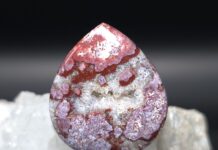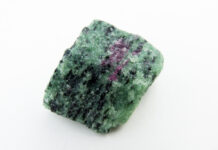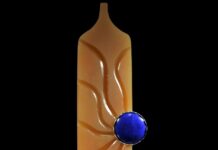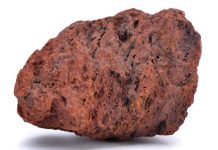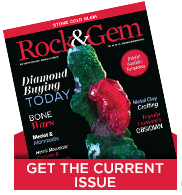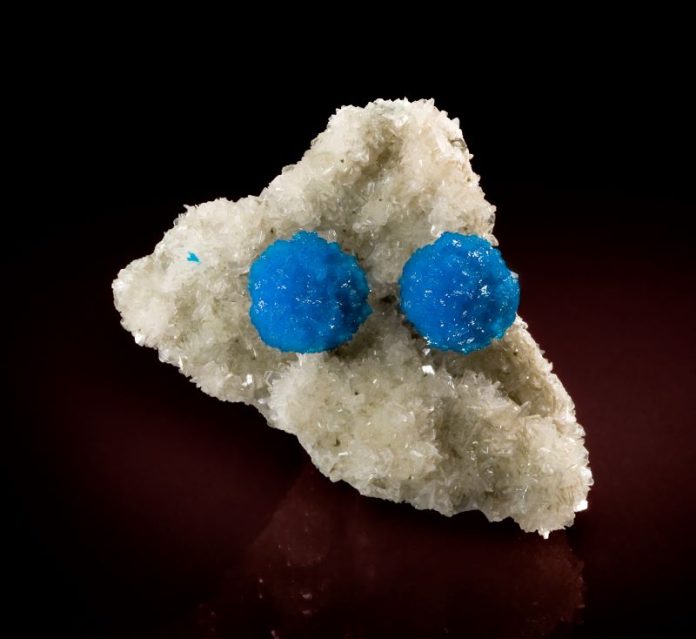
Minerals for collectors come in all shapes, sizes, colors, and complexities—but certain specimens stand out as essential additions to any serious or aspiring collection. Whether you’re just beginning mineral collecting or looking to elevate an established display, building your collection around a thoughtfully curated set of classics can offer both aesthetic appeal and educational value.
In this guide, we highlight 12 must-have minerals (plus a bonus extra) that represent a wide range of crystal forms, chemical compositions and geological origins. These foundational specimens showcase the diversity of the mineral world and provide a springboard for deeper exploration and specialization.
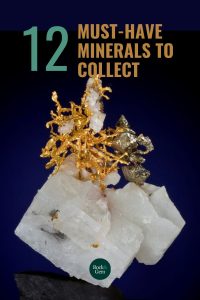
#1 Quartz
Quartz is the most common mineral on Earth, with a simple composition and ubiquitous set of localities, meaning it’s found just about anywhere. Below are a few of the most popular types of quartz and some of their best collecting locations.
Clear (optical) quartz: Arkansas, Peru, Brazil and India Amethyst: Brazil, Uruguay, Namibia and Georgia
Smoky quartz: Swiss Alps, United States, China and Brazil
Rose quartz: Brazil
Related forms of silica include opals and agates, among others, so the collecting possibilities are almost endless. Also, as with some of the other minerals in this article, there are numerous desirable varieties that can make building your collection with quartz more exciting and more challenging.
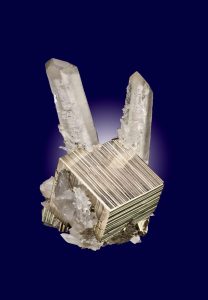
#2 Pyrite
A nod to beautiful, golden pyrite is a must for collectors. Affectionately known as ‘Fool’s Gold’ (affectionately, that is, unless you were one of those miners who were fooled), pyrite has been on every kid’s and every adult’s mineral radar since day one. Most often in shiny cubes, pyritohedrons, or octahedrons, the surfaces can often be smooth or striated. Great localities include Spain, Peru, and Italy.
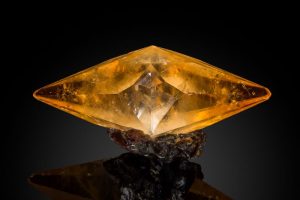
#3 Calcite
Calcite is one of the most popular minerals among collectors, in no small part because it grows in more forms and habits than any other mineral. It occurs in many localities, and it is also one of those few minerals that can have an organic origin (think seashells). In addition to all its forms, many calcites are fluorescent, which can greatly add to their attraction. Great localities can be found in Tennessee, Mexico, England, China, Namibia and Brazil, to name a few.

#4 Garnet
Garnets are actually a group of related species, with similar chemical compositions and crystal habits and a wide range of colors. Most often forming in metamorphic rocks, they also do form in certain igneous situations. In fact, the next time you visit Mt. Rushmore, carefully stop along the road and examine the road cuts. You will see the garnets in the metamorphic rock getting bigger the closer you get to the granite, which was the source of the heat for the metamorphism. When gemmy, well-formed, and/or striated, a good garnet can be a sight to behold. Important localities include Canada, the U.S., Brazil, Tanzania and China.
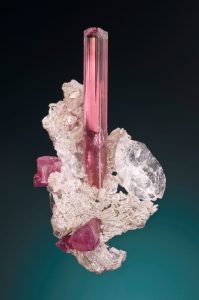
#5 Tourmaline
Tourmalines are also a group of related species, with similar chemical compositions and crystal habits, and a wide range of colors. They form within pegmatites, which are the last growth stages of magma turning into granite. Tourmalines are one of those minerals that many people think of when they simply think “crystal.” One other interesting note about tourmalines… when the crystal is doubly terminated, each end is never the same. There are important localities in the United States, Brazil, Italy and Russia.
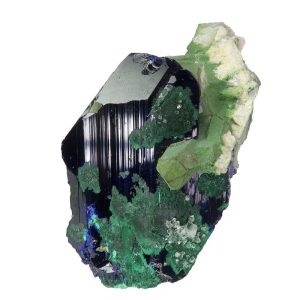
#6 Azurite & Malachite
Like Abbott & Costello or Laurel & Hardy (yes, I’m old), it is difficult to separate these two very closely related copper minerals.
This is especially true because secondary malachite often forms from an alteration of azurite. Nevertheless, the pair makes a great mineral association that is aesthetic and desirable. There is also nothing stopping you from focusing on one or the other, especially with azurite often forming in very fine crystals and malachite often forming in stalactites and/or botryoidal growth that contains fantastic banding when sliced and polished.
#7 Beryl
Similar to tourmalines, beryls are primarily a pegmatite mineral, and like tourmalines, this lends itself to a more exotic and rare chemistry. If you throw garnets into this mix, you have three minerals that provide the rough for excellent cut gemstones. The beryl group has several main species within it: aquamarine (blue), heliodor (yellow), morganite (pink) and goshenite (colorless). And before you start jumping up and down, emeralds (green) and red beryls are also part of the beryl group (smiles). Notable localities include Pakistan, Namibia, Brazil, Colombia, Russia and the United States.
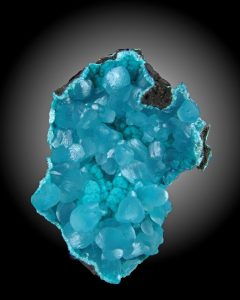
#8 Smithsonite
A minor ore of zinc, smithsonite is an interesting and very attractive carbonate mineral for several reasons. Like a number of the minerals in this article, smithsonite can be found in a wide array of colors, some unique to a location and many not. There are also four basic habits, and again, some of these habits are more prevalent in certain places than others.
In general terms, smithsonite can be found in botryoidal crusts of varying thickness, curved rhombs, rice grains (yes, you will think that, too, when you see them), and slender, scalenohedron-like crystals that can be on the thicker side or very slender and sharp. The great Tsumeb Mine tends to have the rhombs and the scalenohedrons. But if I were to step out and recommend a first smithsonite, my heart would tell you to find a good Kelly blue.
Well-known localities include the Kelly Mine in New Mexico, Namibia, Mexico and Australia.
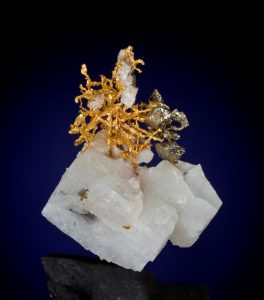
#9 Gold
Gold will be our shining representative for the native elements, which also includes elements such as silver, copper and sulfur.
Soft though it may be, gold sets a standard for desirability and utility being used from antiquity for jewelry and coins. Its beauty is easily maintained as it is virtually non-reactive and will not tarnish. The U.S. has several great locations for crystallized gold, and interestingly, these specimens are usually found in place within quartz veins. Venezuela has great gold and Australia is known, in particular, for its significant gold nuggets.
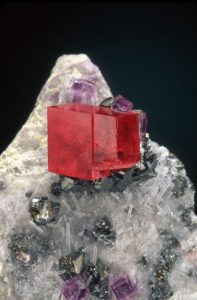
#10 Rhodochrosite
Rhodochrosite is a manganese carbonate, and through its sheer beauty, and relative rarity, it has carved its own place high on almost every collector’s list. With limited habits, higher-temperature red rhodochrosites from Colorado and South Africa rule, with Peru not far behind. There are also very fine lower-temperature pink rhodochrosites from Colorado and China. Interestingly, there is a deposit in Argentina that is renowned for its massive, radial, stalactitic rhodochrosite that produces its own unique, outstanding specimens.
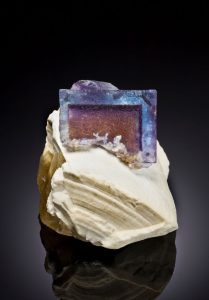
#11 Fluorite
Many collectors have begun their collections with fluorite. Considered a gangue mineral in the mining of ores, it has been known and available for centuries. And because of its availability, it has proven to be more attainable to newer and mid-range collectors, and there are specimens at all levels. In fact, that could be said for everything in this article. Yay! Fluorite also has its own uses, such as a flux in the making of steel and glass, in the making of special enamels and in making hydrofluoric acid.
But for collectors, it is the beauty of its cubes, octahedrons and everything in between that catches the eye, including alien eye fluorite. Fluorite can often have dramatic color-zoning within the crystal, and many fluorites can fluoresce. The colors of the actual crystals also vary widely, which adds to the allure.
#12 Cavansite
It would be a disservice of the highest order not to bring zeolites into the discussion. In simple terms, zeolites are secondary minerals that most often form (but not exclusively) from the interaction of basaltic (extrusive) rocks with alkaline ground waters. This alteration process can easily take tens of thousands to millions of years. You will find these wide-ranging, wonderful minerals in the open cavities within the basalt flows.
The breadth of minerals is quite amazing and the Deccan Plateau in India is particularly famous for these specimens.
So there we have 12 ideas and 12 introductions that encompass hundreds upon hundreds of varieties and variations. You have quite the enviable task in front of you, no matter your level of collecting. As a bonus, we’ve made this a baker’s dozen, so here is your thirteenth mineral.

Bonus #13 Amazonite
Amazonite is a lovely, blue-green variety of microcline, which in turn is a species within the feldspar group. Its merits as a collectible mineral are substantial, but feldspars unto themselves are also an enormously important group of minerals. They make up a hefty portion of all igneous rocks and many metamorphic rocks. When they weather and turn into minerals such as clay, they in turn become a significant portion of sedimentary rocks. So respect, please.
Mineral for Collectors: Tips
Some minerals can fade in light. On a personal note, I keep my mineral room dark, and I would strongly suggest that you keep your specimens out of direct sunlight in a low-UV environment, at the very least.
You may have noticed that I did not include any sizes. Either you like collecting specimens of a certain size (such as thumbnails, miniatures, etc), or it is of no real consequence to you (that would be me, for example. I like aesthetics). It’s only a number and it will be either your first or your last cut. My interest here was the characteristics of the minerals themselves.
You may have also noticed that many of my photo choices are specimens that are combinations of more than one mineral. Personally, I like that, and when chosen well, you get more bang for your buck. Consider that.
And finally, my license plate says FLRITE. What would yours say?
This story about 12 minerals for collectors previously appeared in Rock & Gem magazine. Click here to subscribe. Story by Jeff Starr.



